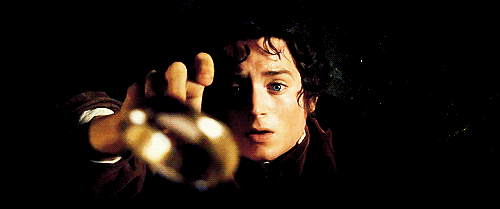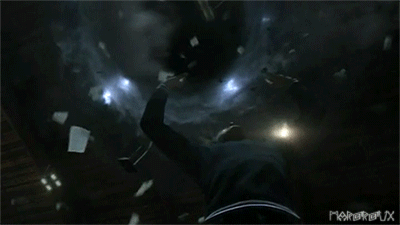Swords, wands and other baubles - Magic systems and their real-life counterparts

Hey there,
traveler!
Here we are
(if even a day or so late) for our last stop in this magic trilogy. Three, such
a wonderful number, isn’t it? I apologize for the delay, sadly this exam period
sucked me up like quicksand and I got no time yesterday to write. But let that
not deter us from today’s topic: the various systems of magic, both in
literature and their real-life counterparts.
Let’s start
with my favorite: magic items. We all know the trope of the wizard’s wand, the
world slaying sword or the wishing lamp, and these varied applications of a
common concept shows just how much potential rests with this system.
As far as I could research, there are a couple of sources for this trope predating the classic fantasy stories.

There’s a
scene in The Lord of the Rings when our heroes are departing Lothlórien and
they receive capes from the elves as parting gift. When Sam asks if they are
magical, an elf replies that they are “just elven”.
The earliest
representations of magical objects followed this mentality – magical stuff was
magical because of their origin. This is really obvious in Arthurian legend
with Excalibur, the magical sword given to Arthur by the Fairy of the Lake or
other Gaelic and Celtic tales like Cu Chulainn and his spear Gae Bolg, or Thor’s
hammer, the legendary Mjölnir.
These weapons were given to their wielder by a
magical race, be it fairies or dwarves, and as such, they became magical by
nature. This then followed into the stories such as the Dragon Rider swords in
Eragon (forged by elves), the Elder Wand in Harry Potter (given by death
itself, although it is a special case because it is an object that’s MORE
magical than it’s “ordinary” magic counterparts) or the Daedric Artifacts in
the Elder Scrolls games (you knew Skyrim would pop up somehow, you knew…).
Another
interesting source is a tribal belief called animancy that popped up all over
the world from pre-Columbus America, Africa, and Eurasia. Animancy, from the latin
“anima” meaning soul or spirit, holds that a person’s spirit can rest in an
object dear to them after their death so it can and will manifest their will
through this object or anyone who holds it. There are folk tales from Europe’s
Transylvania region (yes, the Dracula place) about a belt once belonging to a
shepherd that drove his killers to madness until they confessed their foul
deed. We can see this mainly in horror fiction – cursed trinkets haunted by the
ghost of a long-dead murderer, witch, or a victim of the previous two.
There is
much, much more to this trope, but I could write a short draft about this
topic only. As a last note, I’d like to mention our WIP (because humility is my
greatest weakness). In the world of Seiran, magical objects are the only way of
utilizing magic, so they are more valuable than the magicians (or as we call
them mejais) themselves. These trinkets were created by an ancient civilization
that met its end thousands of years ago and left behind these shiny things.
When a mejai concentrates, they can deter the wind-like force of magic to swipe
through a certain trinket, creating a unique effect – which means the number of
trinkets you have is the number of spells you can use. Now, you could try and force
the magic into your body to act as a channel, but that’s how you end up like
one of our characters – crippled and broken.

Sometimes
it is not magical objects which limit the power of a magician, but an inner
force, the so-called “mana”. This is actually not a new thing, the whole
concept was made up by ancient Polynesians. Mana is the spiritual force resting
in everyone and everything, just waiting to be utilized by someone who can
wield it. Its main use was to heal and protect, but the Maori people for
example thought a tribe that has a certain type of mana holds authority over a
piece of land, so it was used to divide territory as well.
This belief
has a few variations about what exactly holds mana, but most sources agree that
it can be transferred and it isn’t distributed evenly – some people have more
than others. It can also deplete and proliferate, making it even more like how
we see it in games, although there were no potions or crystals to replenish it.
A large amount of mana was attributed to wisdom and wise elders of the
community, and evil acts were believed to rid you of it. This ebb and flow made
it a kind of resource, and as such, roleplaying games and other media plucked
it from the idea tree and embed it into pop-culture as the numerical
representation of magic power.
And lastly, there are the cases where nothing controls the power a magician can wield. This is mostly a fiction concept as it is really hard to show that you can break the world in two in reality, but in literature, it is a fascinating dilemma. In Brian McCallan’s The powder mage, there are three types of magic users, one being the all-powerful Privileged. They can manipulate elements with a twitch of their fingers and rip anyone to shreds in an instant. They wield nearly limitless power and they’re unbeatable in a one-on-one fight. However, they have a limited range on their abilities, far less the titular powder mages (who are basically supersoldiers who can control explosions and bullets), so they feel inferior to them in open, large scale battles when they have the opportunity to stay out of range and just shoot them. This dynamic elevates the feats of Taniel, character who is known for killing Privileged mages very efficiently. I think it is a great opportunity to step up the badassery of a hero who manages to outsmart these powerhouse magicians. The bigger the prey, the greater the victory.
So that’s
it, travelers. A few examples of where the most common magic tropes come from, a
glimpse at how were are utilizing it and a personal example of my favorite
magic system. What other tropes did I miss? Do you want me to research a few of
your favorites? Leave a comment and I’l jump right on it!
Until then,
stay sharp!
Cheers,
Dar




Comments
Post a Comment